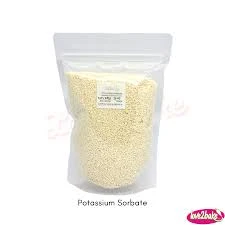
Exploring Various Types of Fertilizers for Enhanced Plant Growth and Health
Understanding Different Types of Fertilizers for Optimal Plant Growth
Fertilizers play a vital role in modern agriculture and gardening, providing essential nutrients that plants need to grow healthy and strong. There are various types of fertilizers available, each designed to meet specific plant needs and growing conditions. Understanding the differences between these fertilizer types can help gardeners and farmers make informed decisions and achieve better results.
1. Synthetic (Chemical) Fertilizers
Synthetic fertilizers are manufactured through chemical processes and are designed to deliver nutrients quickly and efficiently. They typically contain nutrients in precise ratios, such as nitrogen (N), phosphorus (P), and potassium (K), which are essential for plant growth. Common examples include ammonium nitrate, urea, and superphosphate. One of the main advantages of synthetic fertilizers is their immediate availability to plants. However, overuse can lead to soil degradation, water pollution, and reduced microbial activity in the soil.
Organic fertilizers are derived from natural sources such as plant matter, animal manure, and compost. They release nutrients slowly over time, improving soil structure and promoting beneficial microorganisms. Examples include compost, well-rotted manure, and bone meal. Organic fertilizers are favored by many gardeners and organic farmers because they enhance soil health and sustainability. While they may not provide as immediate results as synthetic fertilizers, their long-term benefits outweigh the initial slower nutrient release.
3. Slow-Release Fertilizers
different types of fertilizer

Slow-release fertilizers are a hybrid between synthetic and organic options. They are designed to release nutrients gradually over an extended period, often using coatings that control nutrient release rates. This type of fertilizer helps reduce the risk of nutrient leaching and ensures that plants receive a steady supply of nutrients. Popular formulations include controlled-release coated fertilizers and polymer-coated options. These fertilizers are convenient for busy gardeners who want to minimize the frequency of applications while still providing consistent nutrition to their plants.
4. Liquid Fertilizers
Liquid fertilizers are another popular choice, especially for container gardening and hydroponics. They can be synthetic or organic and are usually diluted in water before application. Liquid fertilizers allow for rapid nutrient uptake and are ideal for addressing specific deficiencies quickly. However, they require more frequent application than granular fertilizers, making proper scheduling important for optimal plant health.
5. Foliar Fertilizers
Foliar fertilizers are applied directly to the leaves of plants. This method allows for quick absorption of nutrients, especially in cases of deficiencies. Typically used in conjunction with soil fertilizers, foliar feeding can provide plants with an immediate boost, particularly during critical growth stages.
In conclusion, the variety of fertilizers available can meet diverse plant needs and growing conditions. By understanding the different types—synthetic, organic, slow-release, liquid, and foliar—gardeners can better tailor their fertilization strategies to promote healthy plant growth and sustainable practices. Ultimately, choosing the right fertilizer can make a significant difference in the productivity and health of plants, leading to bountiful harvests and thriving gardens.
-
The Safety Challenges of Ammonium Nitrate FertilizerNewsJun.26,2025
-
The Critical Role of Mining ChemicalsNewsJun.26,2025
-
Shelf Life of Glacial Acetic Acid Food GradeNewsJun.26,2025
-
Enhancing PVC Longevity with 1,2,3-Benzotriazole InnovationsNewsJun.26,2025
-
China’s Dominance in Food Additive ProductionNewsJun.26,2025
-
Can Aluminum Hydroxide Replace More Toxic Alternatives?NewsJun.26,2025
-
PE and PP Plastics with Benzotriazole AdditivesNewsJun.12,2025
Hebei Tenger Chemical Technology Co., Ltd. focuses on the chemical industry and is committed to the export service of chemical raw materials.
-

view more DiethanolisopropanolamineIn the ever-growing field of chemical solutions, diethanolisopropanolamine (DEIPA) stands out as a versatile and important compound. Due to its unique chemical structure and properties, DEIPA is of interest to various industries including construction, personal care, and agriculture. -

view more TriisopropanolamineTriisopropanolamine (TIPA) alkanol amine substance, is a kind of alcohol amine compound with amino and alcohol hydroxyl, and because of its molecules contains both amino and hydroxyl. -

view more Tetramethyl Thiuram DisulfideTetramethyl thiuram disulfide, also known as TMTD, is a white to light-yellow powder with a distinct sulfur-like odor. It is soluble in organic solvents such as benzene, acetone, and ethyl acetate, making it highly versatile for use in different formulations. TMTD is known for its excellent vulcanization acceleration properties, which makes it a key ingredient in the production of rubber products. Additionally, it acts as an effective fungicide and bactericide, making it valuable in agricultural applications. Its high purity and stability ensure consistent performance, making it a preferred choice for manufacturers across various industries.











